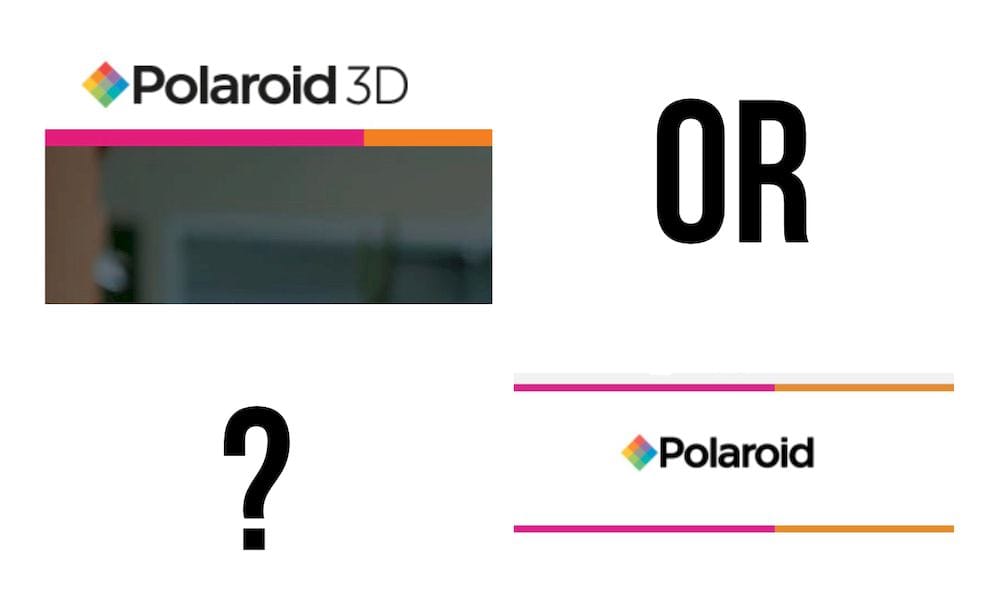
Today we’re talking about Polaroid’s 3D printing operations. Both of them.
Wait, “both of them”? Yes, indeed it appears that Polaroid has two independent 3D printing organizations, selling Polaroid-branded 3D printing gear. This is a bit confusing to me and certainly will be moreso to their market.
What is happening here? I can offer some speculation.
Polaroid is a company that grew up and thrived on imaging technology, whose analog – chemical technology perhaps waned during the digital switchover that occurred in recent years. However, they’ve switched over many of their products to the new digital world.
And today, like several other large technology organizations, have intentions of moving into 3D printing by establishing a product line. But a company coming from another industry has to somehow produce an appropriate technology. How does this happen? There are several strategies.
One excellent example of this might be HP, who first rebranded Stratasys products for a few years before disappearing into secret labs and inventing their own 3D printing process.
But that’s HP, a monstrously large firm with plenty of research and development dollars. What are smaller firms to do?
If a company has a lot of loose cash, they could acquire a smaller 3D printing firm to instantly obtain hardware, software, customers and talent.
There is another approach: branding.
A company not willing to acquire an existing 3D printer company or develop their own could, for a fee, loan their brand to another firm. That firm could brand their products with the larger company’s logos and take advantage of their marketing punch.
This approach has been successfully used by Kodak, one of Polaroid’s direct competitors.
But it is also used by Polaroid, and in a strange way, as far as I can tell.
Polariod first burst onto the 3D print scene a couple of years ago when they announced a series of educational products at CES. When we investigated, it appeared to be a branding deal in which a UK company would produce the equipment, but the equipment would carry the Polaroid label.
That’s all fine, and they’ve been in operation in this mode for some time now.
At this year’s CES we happened to visit the gigantic Polaroid stand, which included all of Polaroid’s many products. One small corner included their 3D printing equipment. There we saw the current versions of the 3D printers we first saw a couple of years earlier, no surprise there.
But we also saw a couple of new machines, including this one:
It’s the Polaroid Nano 3D Printer, a USD$600 device with features that might make it amenable to education markets, sold through Amazon.
That’s good. But then I attempted to find out more information about the Nano and I went to Polaroid’s website, where we had seen their previous 3D print equipment.
That site is still there, but no sign of the Nano.
Where is the Nano described? It turns out it’s visible on a completely different Polaroid site.
Wait, a different Polaroid site?
Yes! There are TWO different sites for Polaroid 3D printers: Polaroid-3D.com and Polaroid3d.com. The latter is the “original” site, and the former is where you can find the Nano.
What on Earth is going on here? Why would an otherwise reputable brand like Polaroid split their web presence for 3D printing into two different sites – which don’t even seem to link to each other or coordinate things?
The answer is likely a problem in their branding strategy. It seems that they’ve made TWO different branding deals where other parties are producing and marketing equipment under the Polaroid banner. Each of these manufacturers appears to be operating their own, separate 3D printing marketing publicly.
This may make sense to these manufacturers, but this arrangement is clearly confusing to everyone else. Someone searching for Polaroid 3D printing equipment would be baffled to find both sites, or find only one and not find the equipment they sought.
For Polaroid this seems to be a mistake in their branding operations, as most larger companies seek to ensure their brand is well known, solid and associated with their quality objectives. I’m not sure how having two separate 3D printing operations does that, and it may even detract from their brand.
Ideally, Polaroid would have a single site encompassing all of their 3D print products. However, getting there from the present state could be challenging, as it appears their re-branders have been given permission to perform their own marketing.
It should be interesting to see how Polaroid evolves this situation over the next year.

